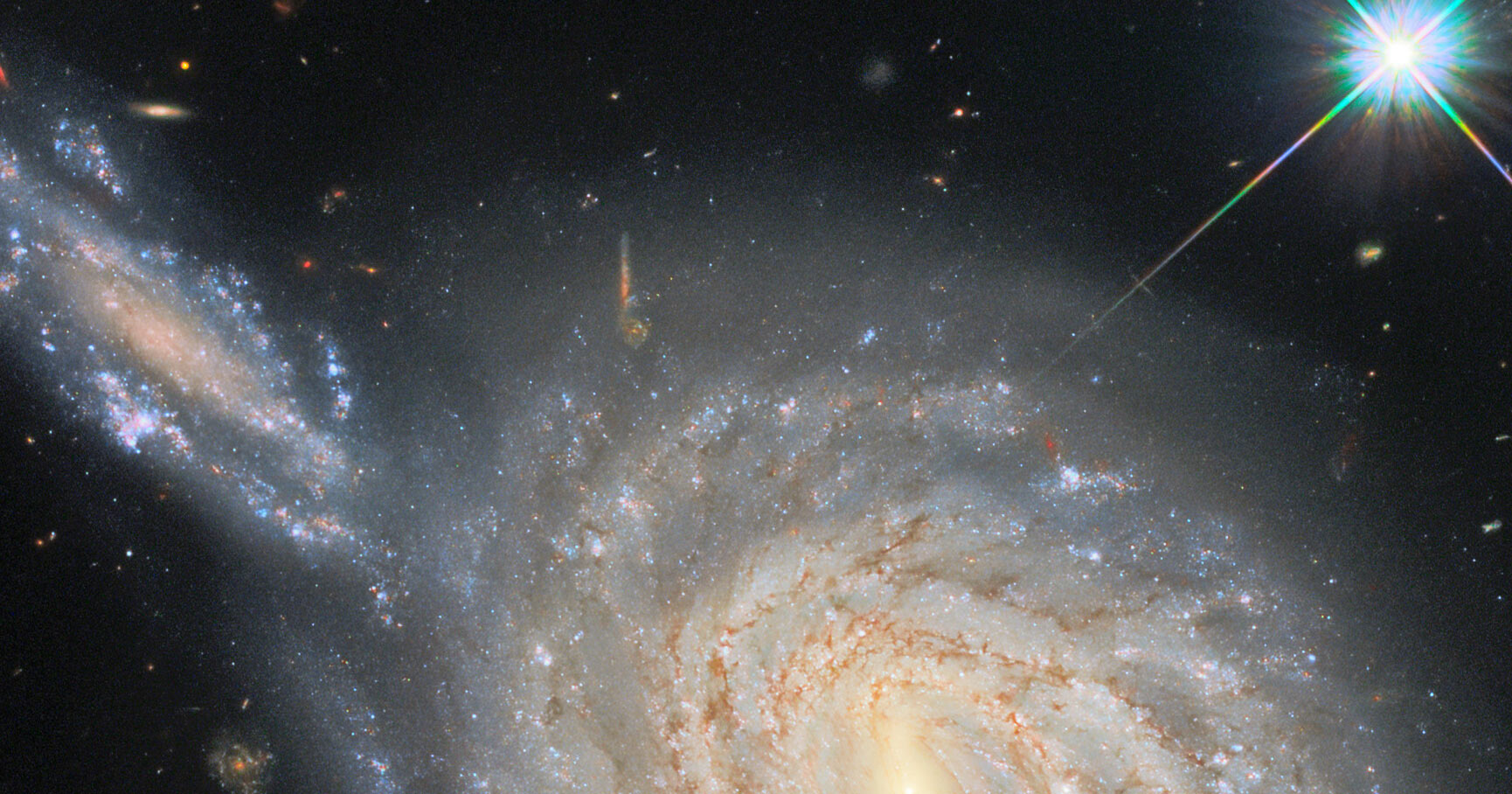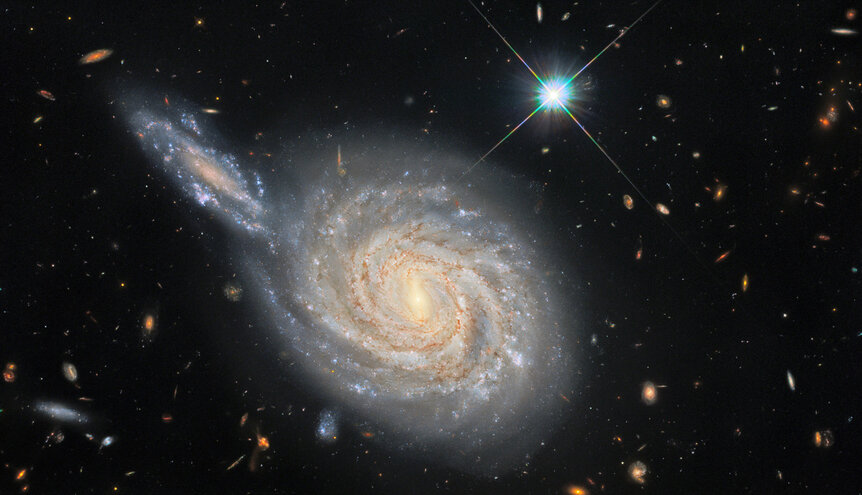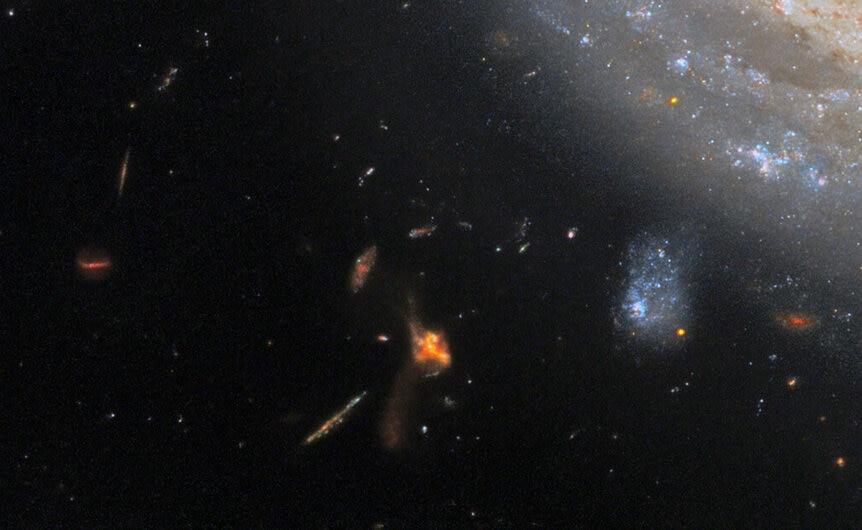Create a free profile to get unlimited access to exclusive videos, sweepstakes, and more!
Line of sight
How do you find the distance to objects quadrillions of km away?

As much as I love gazing out into the night sky and taking in the beauty of the stars, there is one thing that is robbed from us when we do so: Our sense of distance.
We evolved on the surface of the Earth, with binocular vision that gives us a sense of depth using parallax. But the farthest thing we can reasonably be expected to gauge the distance for is only a couple of hundred meters away. Certainly we have other ways of estimating distance for other objects — we can judge by apparent size if we know how big it actually is, for example — but that gets pretty rough the farther away something is.
The closest astronomical object in the sky is the Moon, which is about 380,000 kilometers away. Our binocular vision is utterly useless for that span of space, and only a sophisticated use of geometry allowed the ancients to estimate its distance. The Sun is 400 times farther away than the Moon, and the nearest star is nearly 300,000 times farther away than the Sun!
When it comes to the Universe over our heads, distance is something we have no sense of.
But then we invented science, and technology, and we developed methods of measuring even these soul-crushing distances. And not just the stars, but the galaxies.
Like NGC 105.
This Hubble Space Telescope image of NGC 105 shows it to be a jaw-droppingly spectacular and very nearly face-on spiral galaxy. Our own Milky Way would look much like it if seen from a distance (instead of being stuck inside it as we are).
NGC 105 is about 240 million light years away from Earth. We know this in a variety of ways. Its light is redshifted because the Universe is expanding, carrying us and the galaxy away from each other. We've measured the rate of that expansion, so by looking at how rapidly NGC 105 moves away from us we can measure its distance.
But there's more. The galaxy has a peculiar kind of star in it called a Cepheid variable, and these stars physically pulsate, expanding and contracting. This causes their light to increase and decrease on a measurable schedule, and over a century ago astronomers figured out that the time between pulses is related to the actual luminosity of the star, how much light it emits. By measuring how bright it appears, faded by distance, and the time between pulsations, astronomers can also measure its distance.
That's why this Hubble image was taken: To measure the Cepheids in it and help nail down its distance. But that's not the only reason…
NGC 105 has hosted at least three Type Ia supernovae (SN 1997w, SN 2006tg, and SN 2007A. These are when white dwarf stars explode, and it's possible to measure their distance if you can measure how bright they get. As I've written before, my friend and colleague Adam Riess figured out how to do this for his PhD thesis and was part of the team that used this method to discover dark energy, the mysterious force that is causing the universal expansion to accelerate.
We can use that method to measure the distances to galaxies that are incredibly far away, so far we can't see their Cepheid variables. By observing NGC 105 with Hubble, Adam can gauge the distance using Cepheid and supernovae, and calibrate how to use those exploding stars for much more distant galaxies — we call this bootstrapped scale the distance ladder.
Now look again at the Hubble image. See that galaxy that looks like it's about to slice into NGC 105 to the upper left? That's the galaxy LEDA 212515, and their impending collision is an illusion: The smaller galaxy is 350 million light years away (measured using its redshift), half again farther than NHC 105.
See? Our innate sense of distance is useless for judging cosmic ones.
It gets better. That bright star to the upper right? That's in our galaxy, and is probably a couple of thousand light years away at most*. They're right next to each other, but NGC 105 is probably a couple of hundred thousand times farther away.
And as a pièce de résistance: All those fuzzy orange/red blobs all over the image? Those are galaxies that are billions of light years away. Billions. The brightest of these might appear as dots in earlier images, and with Hubble we see them for what they are, galaxies a decent fraction of the way across the observable Universe.
Each of those has billions of stars and its own separate care. This one caught my eye:
The reddish one in bottom center there has two long, faint arcs coming out of it. I can personally guarantee that's two (at least) galaxies colliding. How do I know? Well, those arcs are likely tidal tails; stars, gas, and dust flung out by the gravitational interaction of the galaxies as they collide. But also it bears a striking resemblance to the grand Antenna Galaxies, which we know are two colliding galaxies. But this unnamed example in the NGC 105 image is probably dozens of times farther away.
We may never know anything more about them, so distant are they and so faint. Perhaps in the coming decades bigger and more sensitive astronomical observatories will measure their size and distance and color, but in that case we'll have thousands more examples like it, and it will be lost, this time in a crowd as opposed to anonymity.
One key to truly understanding the cosmos is a simple one: distance. But it's anything but simple to determine.
Amazing, isn't it, what one can see all along the same line of sight? If that line extends far enough.
*I tried, but could not find a reliable designation for this star using SIMBAD, Gaia, or anything else. SkySafari says it's GSC 0602-1071 but that doesn't show up in any catalogs I can find — I think the number is the wrong format. So if anyone knows, tag me!




























